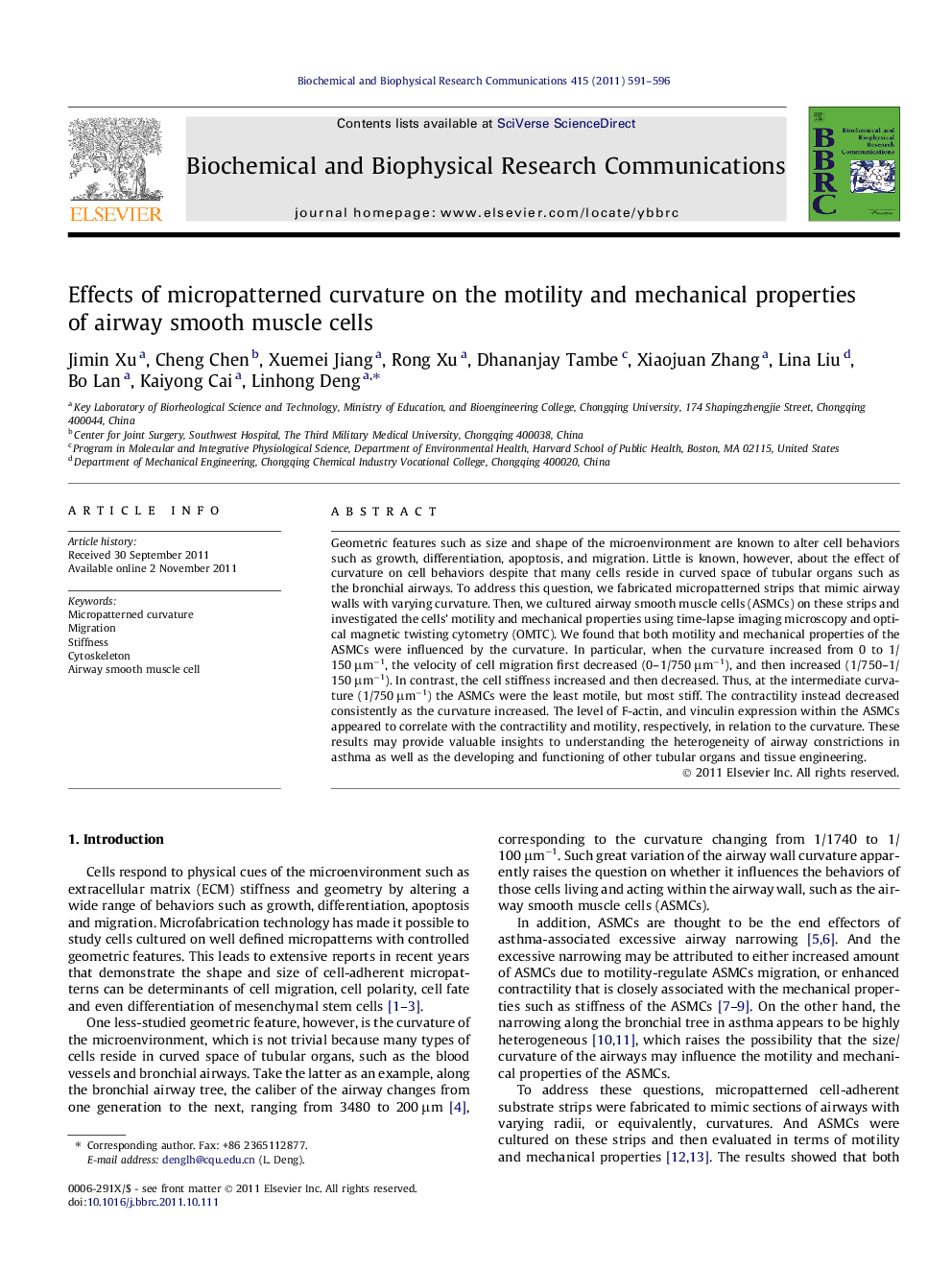| Article ID | Journal | Published Year | Pages | File Type |
|---|---|---|---|---|
| 1930182 | Biochemical and Biophysical Research Communications | 2011 | 6 Pages |
Geometric features such as size and shape of the microenvironment are known to alter cell behaviors such as growth, differentiation, apoptosis, and migration. Little is known, however, about the effect of curvature on cell behaviors despite that many cells reside in curved space of tubular organs such as the bronchial airways. To address this question, we fabricated micropatterned strips that mimic airway walls with varying curvature. Then, we cultured airway smooth muscle cells (ASMCs) on these strips and investigated the cells’ motility and mechanical properties using time-lapse imaging microscopy and optical magnetic twisting cytometry (OMTC). We found that both motility and mechanical properties of the ASMCs were influenced by the curvature. In particular, when the curvature increased from 0 to 1/150 μm−1, the velocity of cell migration first decreased (0–1/750 μm−1), and then increased (1/750–1/150 μm−1). In contrast, the cell stiffness increased and then decreased. Thus, at the intermediate curvature (1/750 μm−1) the ASMCs were the least motile, but most stiff. The contractility instead decreased consistently as the curvature increased. The level of F-actin, and vinculin expression within the ASMCs appeared to correlate with the contractility and motility, respectively, in relation to the curvature. These results may provide valuable insights to understanding the heterogeneity of airway constrictions in asthma as well as the developing and functioning of other tubular organs and tissue engineering.
► We fabricate gradient curvature at a same stamp. ► We examine the changes in the expression of F-actin and vinculin. ► Curvature influences cytoskeleton structures and formation of focal adhesions. ► Curvature affect cells motility and mechanical properties.
